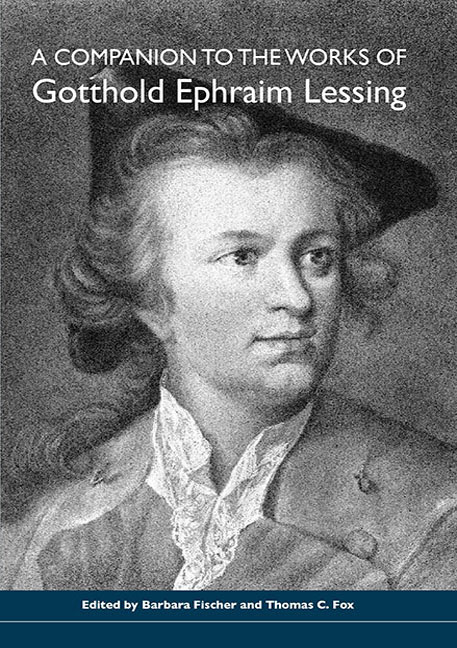Book contents
- Frontmatter
- Contents
- List of Illustrations
- Acknowledgments
- Lessing Editions and Abbreviations
- Selected Works by Lessing
- Introduction
- Lessing's Life, Work, and Times
- Criticism and Aesthetics
- Philosophy and Theology
- Drama and Drama Theory
- Reception
- Contact Organizations
- The Lessing Museum and Research Center for Lessing Reception in Kamenz
- The Lessing Academy in Wolfenbüttel
- A Brief History of the Lessing Society
- Works Cited
- Notes on the Contributors
- Index
The Lessing Museum and Research Center for Lessing Reception in Kamenz
from Contact Organizations
Published online by Cambridge University Press: 28 April 2017
- Frontmatter
- Contents
- List of Illustrations
- Acknowledgments
- Lessing Editions and Abbreviations
- Selected Works by Lessing
- Introduction
- Lessing's Life, Work, and Times
- Criticism and Aesthetics
- Philosophy and Theology
- Drama and Drama Theory
- Reception
- Contact Organizations
- The Lessing Museum and Research Center for Lessing Reception in Kamenz
- The Lessing Academy in Wolfenbüttel
- A Brief History of the Lessing Society
- Works Cited
- Notes on the Contributors
- Index
Summary
Director, Lessing Museum and Research Center for Lessing Reception, Kamenz
Even friends of literature have, for the most part, only vague ideas about Lessing's place of birth. Kamenz, where the poet was born and where he spent the first twelve years of his life, is a small town of 19,000 inhabitants in the Oberlausitz (Upper Lusatia) region of Saxony. It was founded in 1225, approximately forty kilometers northeast of what is today the city of Dresden. At the beginning of the eighteenth century Kamenz had about 2,000 inhabitants.
On 22 January 1729, Gotthold Ephraim Lessing was born to Justina Salome Lessing, the wife of Johann Gottfried Lessing, Kamenz's Lutheran minister. He was the third child of twelve, and the oldest surviving son. Training and education started fairly early for the adolescent, both in his parents’ house and through private tutoring. Later, he attended the Städtische Lateinschule from 1738 to 1741.
City life in Kamenz in the first half of the eighteenth century was marked by modest wealth and characterized by the emerging bourgeois cultural tradition that was typical for the Oberlausitz towns at that time. A devastating fire in 1842 destroyed the city almost completely. Nevertheless, Kamenz is still laid out according to its original plan, and some buildings have been preserved as historical landmarks. Unfortunately, the fire also destroyed the house in which the poet was born. At the site next to the St. Marien church where Lessing's father served as minister, a monument commemorates the city's most important son. Kamenz is also home to a modern literary museum, financed by the city and sponsored by the state government of Saxony, as well as the federal government of Germany. It serves all those who are interested in Lessing and the Enlightenment.
Until the early twentieth century, Kamenz honored Lessing's life, works, and literary heritage mainly through commemorative events, lectures, and theater productions. The desire of many of the city's people for a museum honoring Lessing became a reality in 1929, on the poet's 200th birthday. It was then that the foundation stone for a Lessinghaus was laid. In 1931, on the 150th anniversary of the poet's death, the building was dedicated.
- Type
- Chapter
- Information
- A Companion to the Works of Gotthold Ephraim Lessing , pp. 353 - 356Publisher: Boydell & BrewerPrint publication year: 2005



